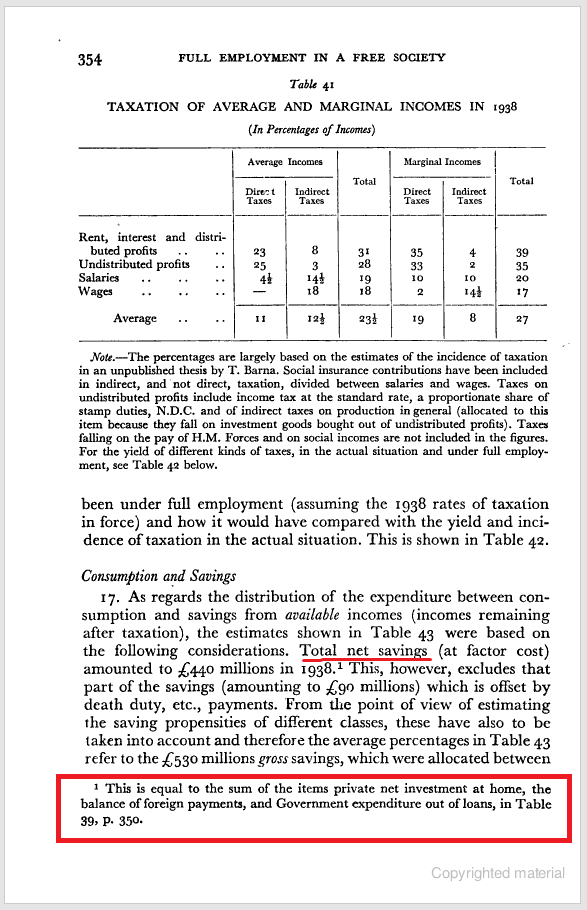So Karl Whelan wrote another article on TARGET2 claiming once more that a loss of TARGET2 claims of the Bundesbank does not matter at all to Germany. He has a new paper as well. Earlier he was arguing there was no loss at all.
His argument roughly is that since there is no longer trade settlement in gold, money is thence fiat and the loss does not matter.
Closed economy monetary economics is confusing enough for most monetary economists but when matters of open economy are discussed, it is a Herculean task for them to make sense of simple things. Some economists are better but end up making a mess.
First there is this story of “fiat money”. Supposedly after 1973 – when the Smithsonian Agreement broke down – money or currencies became fiat according to many theories. I guess this is generally the notion made popular by Austrian economists as far as I can tell and (is the root of all evil in this story). But this is strange. If “fiat money” has any meaning to it, money was equally fiat before – either during the Bretton Woods system or in any monetary institutional setups before that. So the US Dollar was as fiat as in 1920 as in 2012. There’s no meaning to saying that currencies became fiat suddenly.
Of course, in the Bretton Woods system, nations’ governments were required to redeem official foreign balances either in gold (till 1968), SDRs (after 1968) or in the currency of the member making the request (if any). In addition, there was a system of market convertibility in addition to official convertibility. In addition, the US volunteered to convert official foreign balances to gold till 1971.
So one could say that international trade was settled in gold. However, since money is credit, international trade would also settle by borrowing from foreigners – not just the official sector borrowing but other resident sectors borrowing from foreigners. The proper way to understand this is to study how balance of payments accounting is done and it was no different now than what it used to be.
A nation which runs a trade deficit need not lose gold reserves because the current account deficit could be financed via the financial account. If there is a problem in inflow, changes in interest rates by the central bank would attract funds from foreign financial centers.
More generally as always, it is income changes which works to bring imbalances back to balance. Sometimes things get out of hand, leading to a loss of gold reserves and the need for international financial help for exceptional financing of the balance of payments. But even in the supposedly new fiat world, things can get out of hand and require exceptional financing transactions.
Before Bretton Woods, nations had less formal agreements and typically the central bank and/or the government would promise to convert currency notes into gold at the request of the holder and not just official balances. It was thought that this made currencies acceptable and that the central bank should not issue more currency notes than the amount of gold they held. This story however, has no empirical support. It was however thought that the amount of currency notes is some multiple of the amount of gold and perhaps this is the origin of the story of the multiplier. But this is a troublesome story and there is some sort of view that money is exogenous in such monetary setups but endogenous otherwise – which makes no sense at all. Money is always credit-led and demand-determined and hence endogenous.
[To be more complete, some nations do not have a legal tender of their own and use other currencies as per law]
Now, economists argued that in the era of fixed exchange rates, an outflow of gold would lead to an automatic contraction of the money stock – the underlying theory being that of the money multiplier. This is presented as the Mundell-Fleming approach. Wages would reduce and this will lead to more competitiveness in international markets and bring the trade imbalance back into balance. This didn’t work because the whole notion was based on ideas of the money multiplier and notions such as that. (In addition it ignores the crucial aspect of non-price competitiveness).
So Emperor’s New Clothes – economists figured that floating exchanges would do the trick. Even a great economist such as Nicholas Kaldor believed so (while he was warning about troubles with the Bretton Woods system in the 1960s) but he was the first to point out that it doesn’t do the trick – soon in the 1970s.
More troublesome is the notion that if a nation is indebteded to foreigners in the domestic currency, it doesn’t owe foreigners anything and that this debt is just technical. The reason given is that nations are relieved to convert balances of foreign governments and/or central banks in the new era (the ones floating their exchange rates). But this is highly mistaken. While it is untrue (official convertibility still exists), it ignores the more important concept of market convertibility. The “reason” is dubious. It is true that it doesn’t cost the central bank anything if banks ask for currency notes to satisfy the demand for their customers, it doesn’t mean much. The private sector net wealth and aggregate demand is affected by net government expenditures and precisely when the nation has a balance of payments crisis, does the government have less power. It however is useful to have the government to make expenditures and take other emergency actions to handle a crisis in the external sector (with the exception of governments in a monetary union and nations which have “dollarization”). Debt denominated in domestic currency is useful for another reason. Assuming foreigners do not repatriate funds abroad when the currency is depreciating, it prevents a revaluation loss on liabilities. Indebtednesss in foreign currency on the other hand, leads to revaluation losses – implying more is needed from export receipts to prevent the debt from getting out of hand.
The fact that in any monetary setup nations face a balance of payments constraint has led nations to grow via success in international trade. Those who understood this trick early gained market and their success led to more success. This in turn puts a handicap on the rest of the world. The ‘mercantalist’ nations while didn’t believe the invisible hand (according to Keynes) nevertheless gain tremendously from the present system of free trade. As long as free trade is maintained, it is advantageous to nations to have strong external positions – in trade and in claims held on foreigners.
Now to the paper of Karl Whelan.
For Whelan, the external assets of a nation – including the claims of the government on non-residents – does not matter at all.
When considering the loss of the Bundesbank’s TARGET2 claim, it is important to distinguish between implications that matter and those that don’t. Most of the commentary on this issue has focused on implications for the Bundesbank itself and the need for a hugely costly recapitalisation of the central bank. For example, Burda (2012) argues that “Germany has now become a hostage to the monetary union, since a unilateral exit would imply a new central bank with negative equity.” However, there are a number of reasons why the capital position of the central bank is something of a red herring when considering a break-up scenario.
The first reason for this is that despite the common belief that central banks need to have assets that exceed their notional liabilities, there is no concrete basis for this position. Systems like the Gold Standard required a central bank to “back” the money in circulation with a specific asset but there is no such requirement when operating a modern fiat currency. A central bank operating a fiat currency could have assets that fall below the value of the money it has issued – the balance sheet could show it to be “insolvent” – without having an impact on the value of the currency in circulation. A fiat currency’s value, its real purchasing power, is determined by how much money has been supplied and the factors influencing money demand, not by the central bank’s stock of assets. As discussed in the attached box, close examination reveals little merit to the various arguments that are put forward for the idea that a central bank must have positive capital to achieve its goals.
The second reason the focus on central bank capital is a red herring is that, even if it is decided after a break-up that Germany must recapitalise the Bundesbank, rather than being hugely costly, this recapitalisation would have no impact on either the net asset position of the German state or its budget deficit. Let’s assume the German government recapitalises the Bundesbank by providing it with an interest-bearing government bond. While the government’s gross debt will increase, the government bond becomes an asset of the Bundesbank, so the total public net debt does not change.
Similarly, suppose the new debt provides interest payments of €3.9 billion (equal to the annual interest that would be generated by the September 2012 level of Bundesbank net Intra-Eurosystem claims). This payment would raise the profits of the Bundesbank by this amount, thus raising the amount the Bundesbank can return to the German government by the same amount, resulting in no change in the budget deficit.
So the issue facing Germany in case of a loss of its Intra-Eurosystem claims is not the insolvency of the Bundesbank or the costs associated with recapitalising it. The real issue is simply that the Bundesbank had a large asset and this asset will have disappeared. Still, despite the eye-popping level of the Bundesbank’s TARGET2 claim, the disappearance of the net income from the Intra-Eurosystem claims would have a very modest impact on the annual German budget. At an interest rate of 0.75 percent, the yield of €3.9 billion on the net Intra-Eurosystem claims of €516 billion as of the end of September represents only 0.15 percent of German GDP. Rather than a huge potential loss keeping Germany hostage within the Eurozone, I suspect this is a loss than many Germans would shrug off as perhaps being smaller than the likely costs associated with the sovereign bailout funds aimed at saving the euro.
Although Whelan accepts there is a loss (although he wasn’t earlier), there is hodge-podge here in the whole write-up. Whether there is gold involved in settlement of international debt or if the government promises to convert currency notes into gold (to keep its currency acceptable and which is just an illusion in any case) is an entirely irrelevant issue. The potential of a loss of huge amounts (given that a panic can lead to further losses for the German public sector – to see how see this post) is dreadful to Germany. The seigniorage calculation is hardly useful. It is like telling someone that a $1m loss doesn’t matter because it only earns $2,500 per year – given current interest rates. His point that there is “no change in the budget deficit” if Bundesbank’s foreign assets get replaced by German government debt has a simple calculation mistake – in one case the public sector is receiving interest income from abroad and in the other it isn’t.
(Apologies for misspelling Whelan earlier in some places in earlier version)

